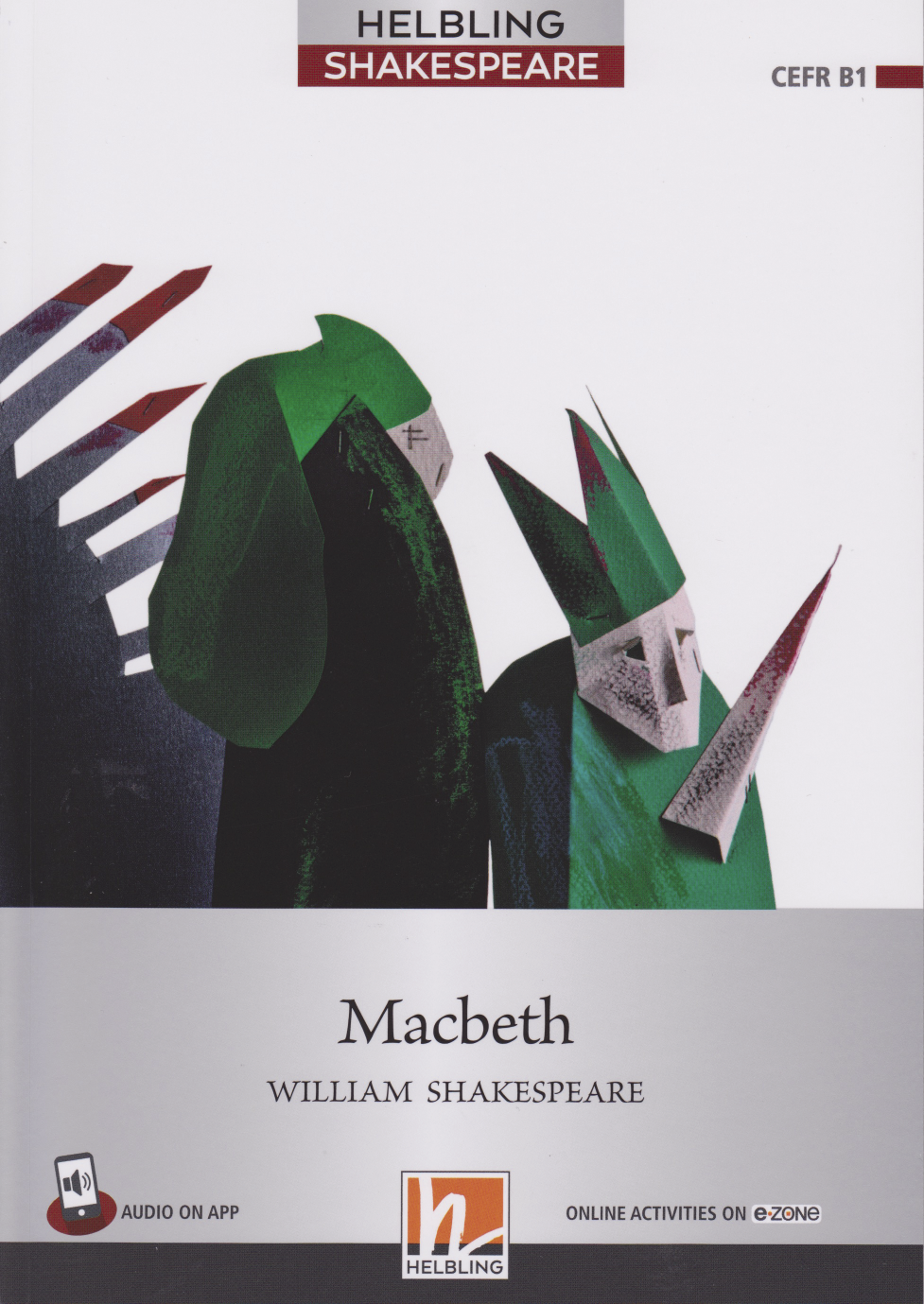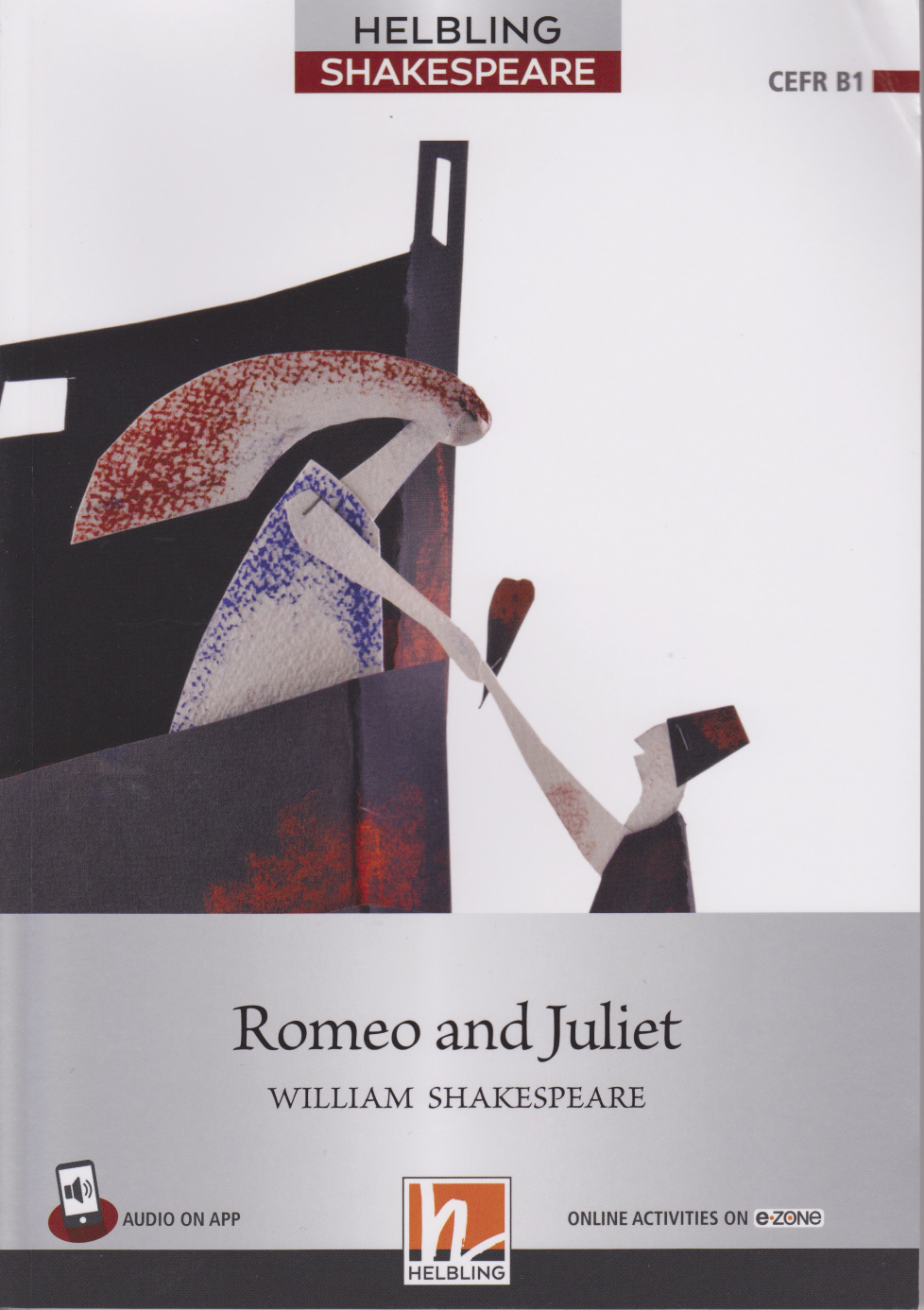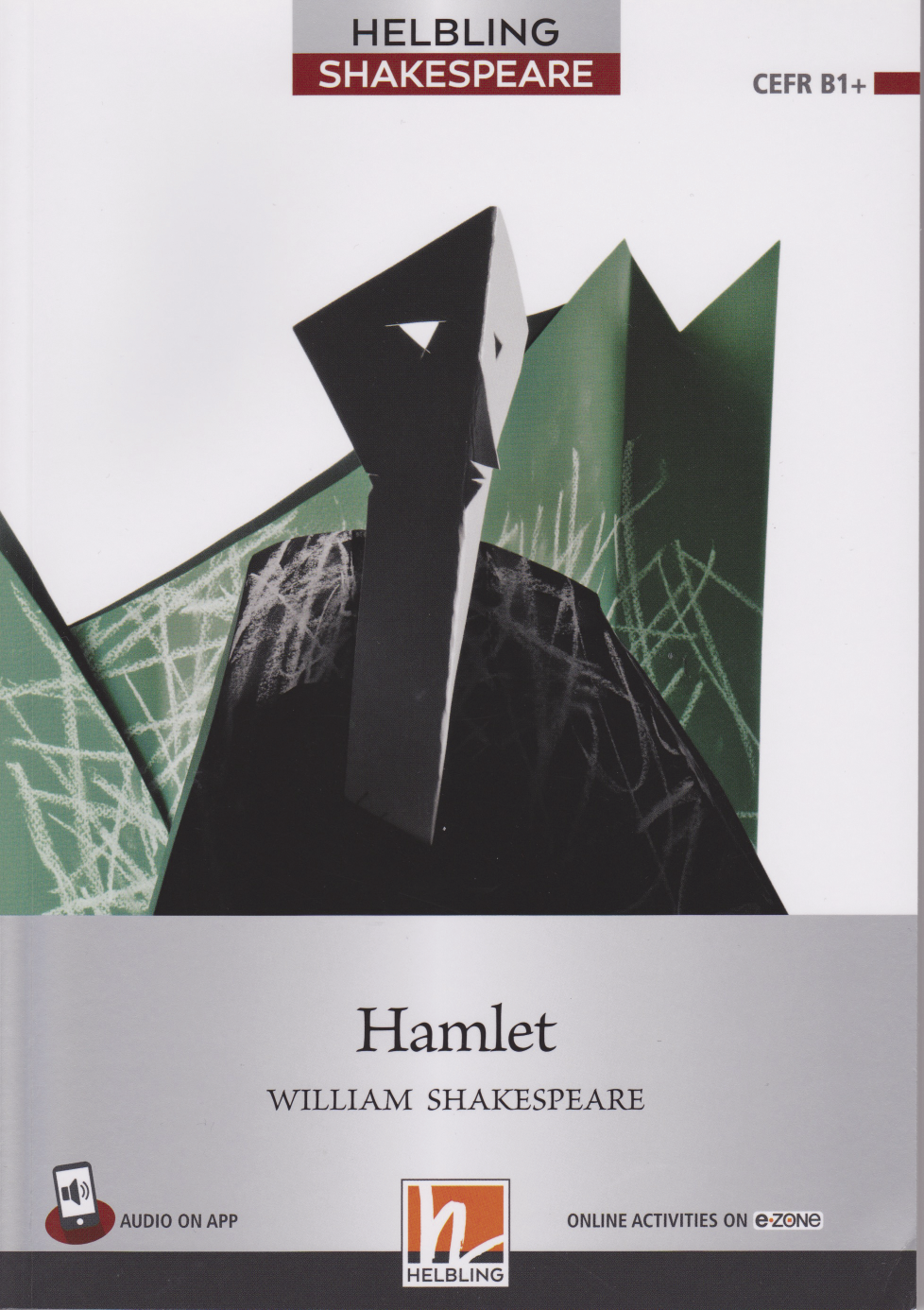Helbling’s new Shakespeare series
Macbeth
by William Shakespeare Helbling 2019 978-3-99089-135-3
Romeo and Juliet
by William Shakespeare Helbling 2019 978-3-99045-856-3
Hamlet
by William Shakespeare Helbling 2019 978-3-99045-857-0
The three books reviewed here (Macbeth, Romeo and Juliet and Hamlet) are part of Helbling’s new Shakespeare series, aimed at secondary-level and adult students at CEFR B1 level and above.
Many teachers say that they would like to introduce their language learners to Shakespeare – considered one of the finest, if not the finest, English-language playwright of all time – but they find the difficulty of the language a barrier. This is hardly surprising, given that generations of native-speaker schoolchildren also struggle to understand Shakespeare’s plays.
Various attempts have been made by ELT publishers to address the problem of making the language of great English literature accessible to non-native speakers. Classical Comics’ graphic novel series was particularly well received, and included Macbeth and Romeo and Juliet, with the full texts ‘translated’ into modern English and placed within exciting comic-book style artwork. This style of presentation acknowledged the fact that these are plays, composed of dialogue, not simply stories to be narrated. However, the poetry of the original language was lost. Simplifying the English is a common answer to the problem of archaic language, but it robs the students of the genuine experience of reading and listening to Shakespeare and pretty much destroys the poetry, reducing each play to a basic storyline, boiled down into graded reader format.
Helbling’s solution is to present the students with key scenes from each play in Shakespeare’s actual words, together with a modern-English commentary which runs alongside. By doing this, they expose the students to the ‘real thing’, allowing them to hear the poetry spoken in a dramatised audio recording, but at the same time helping them to understand the meaning. Simple summaries explain what happens between the chosen scenes. This makes the whole play much more accessible, provides scaffolding to help the students understand the language and the poetry of Shakespeare (thus giving the motivational boost that learners get when they find they can understand something in authentic English) and leaves room for some very fine supporting materials.
Each of the selected scenes, together with activities and texts based on it, forms one unit of the book. A summary of the plot so far begins the unit, and the students are encouraged to predict what will happen next. They then read and listen to the key scene, using the notes to help them understand it. Each scene is followed by a series of activities under the headings Understand, Analyse and Think, which encourage the students to engage with the details of the text, to analyse the effect of the poetry and to think about such things as the background, how an audience might react to the scene and the themes that are explored within it.
A Vocabulary Building section follows, which explores everything from talking about the weather (Macbeth) to similes (Romeo and Juliet) to names for flowers and plants mentioned in the text (Hamlet, Ophelia’s death scene). The activities in this section enable the students to gain a richer understanding of the vocabulary used by Shakespeare, its relevance today and, in places, the language that we now use in preference.
After that is a Culture section, with a text on a topic relevant to the scene (in Macbeth, these topics include the historical context, the life and times of James I, the Gunpowder Plot, Scottish traditions, and contemporary beliefs about witches and witchcraft).
From Reading to Performing has activities reminding the students that this is a play, and encouraging them to consider such things as how the lines should be delivered and how the scene might be staged.
A final Test Yourself section rounds off each unit, giving the students a chance to find out how much they have learnt. (Also, at the end of the book, is a single Exam Practice section, aimed at those working towards various Cambridge exams.)
Further activities are available online via Helbling e-zone (a personal access code for this site appears at the front of each book).
For each play, the supporting materials appear extremely well thought-out. The topics and activities are relevant both to the key scenes which are focused on and to the students’ own language needs. A helpful timeline appears at the beginning of each book, linking Shakespeare’s life and work with important historical and political events, and there are good descriptions of each of the main characters in the play.
One feature of the books is that many of the illustrations are paintings from museums and art galleries. Shakespeare’s plays have inspired artists as diverse as Delacroix and Klimt, and these artists often illustrated the very same scenes that have been chosen as the focus of these books, so the illustrations are extremely apt. Hamlet, Macbeth and Romeo and Juliet are three of the best-known of Shakespeare’s plays and the ones that have probably inspired the most artists. It would be interesting to see if as many paintings were available for other plays. My one complaint would be that the paper and print quality is not really good enough to allow for proper reproduction of these paintings. Many of them appear too dark to make out much detail. It is a shame that some images are pretty much unusable when it comes to the exam-style comparing and discussing activities that are suggested.
This is my only reservation about this series, however, and I would thoroughly recommend it as a way to introduce students to the richness of Shakespeare’s plays and to help them to get as much as possible from the experience.
Helena Gomm West Meon, UK



Comments
Write a Comment
Comment Submitted